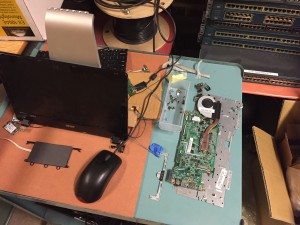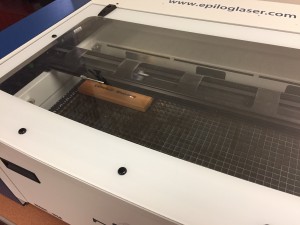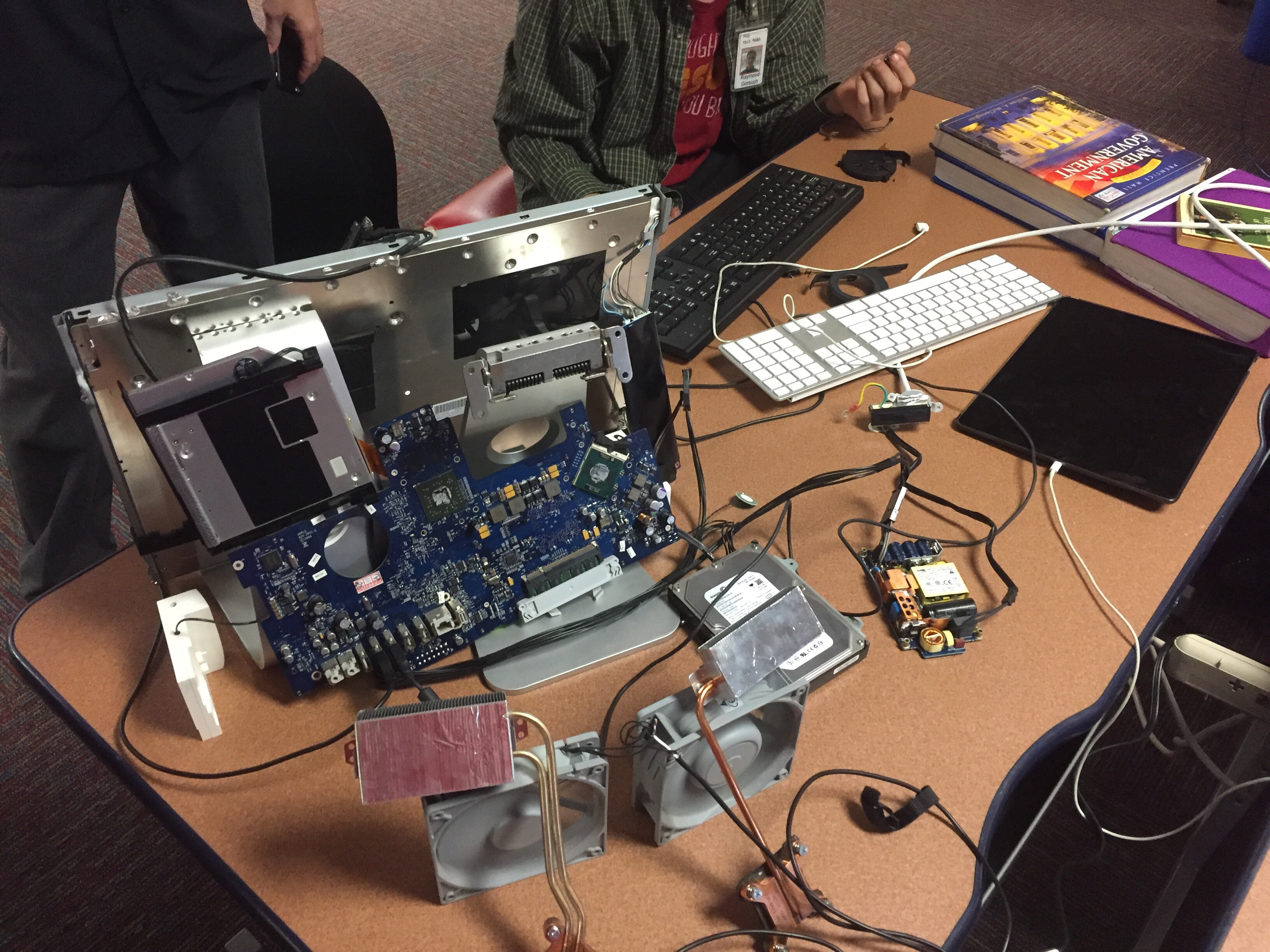
At the beginning of the quarter we were working on this computer. After collaborating on who was going to undo the computer screws, and put the computer back together, we started the deconstruction. We then investigated what each part’s job was, and I then put all the parts back together. We had a problem in connecting all the parts to the correct places, and then could not find a plug to the wall. When turning the computer on, we wanted to check that the speakers work so we played Mozart’s Juptier. Here is a video of the computer playing Mozart.
The fans are running behind the computer because we were worried the computer would overheat without it’s cooling fans attached.
I was showing my math teacher, Mr. Morrison, how the laser cutter works, as he loves to work with wood and engraving. Being that he was a math teacher I decided that the Pi symbol on a circle 3.14 inches in diameter would be best. I walked him through the steps on how to laser cut different materials.
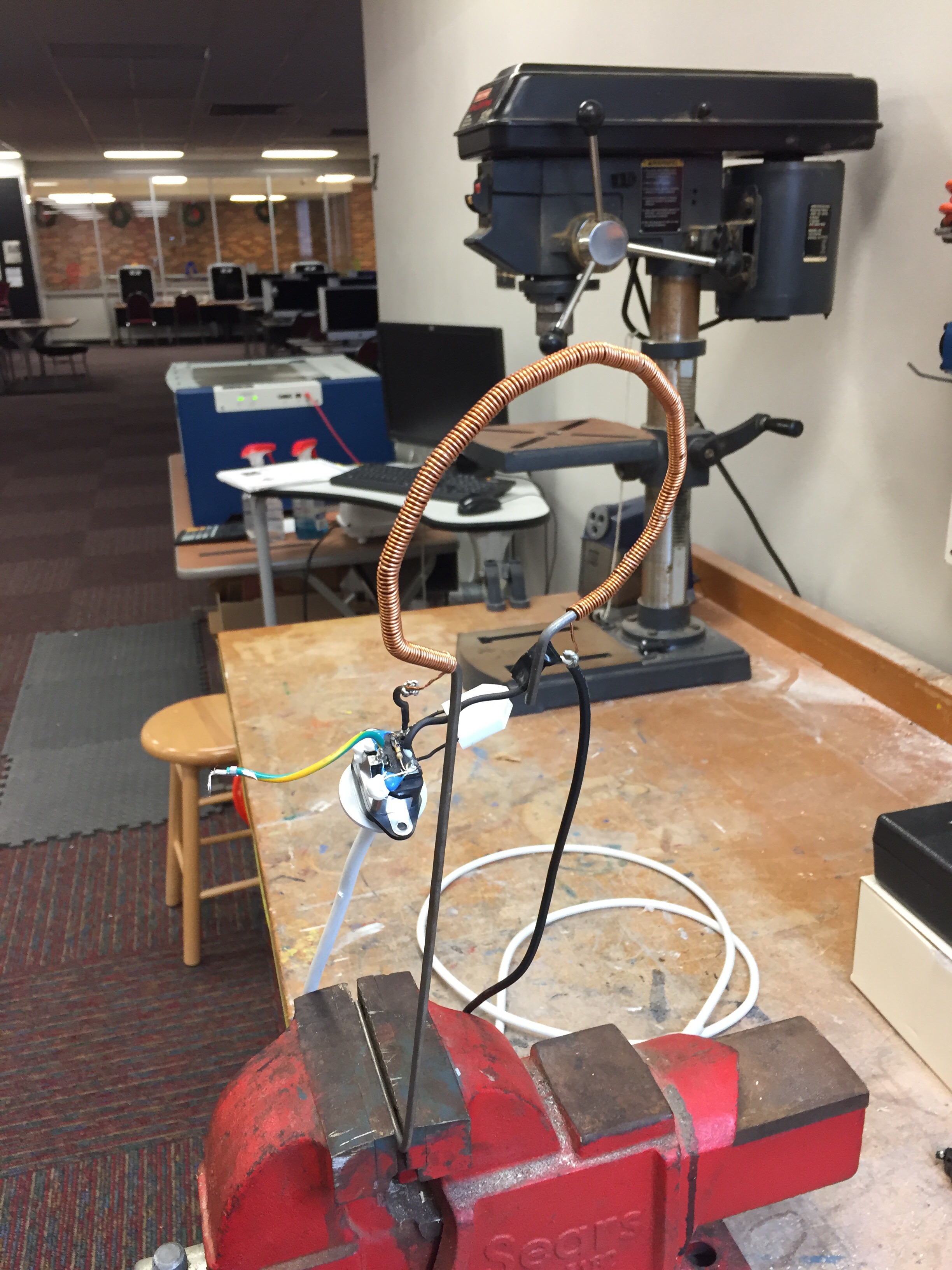
This device took a lot of research on how electromagnets work. The idea behind it was an alternating current creates a changing magnetic field. This magnetic field would then levitate a steel marble. This only works with alternating current as direct current only creates a magnetic field in one short burst. Sadly, when the device was plugged in there was a small explosion as the wire melted. The device no longer works, and I have stopped trying for safety reasons.
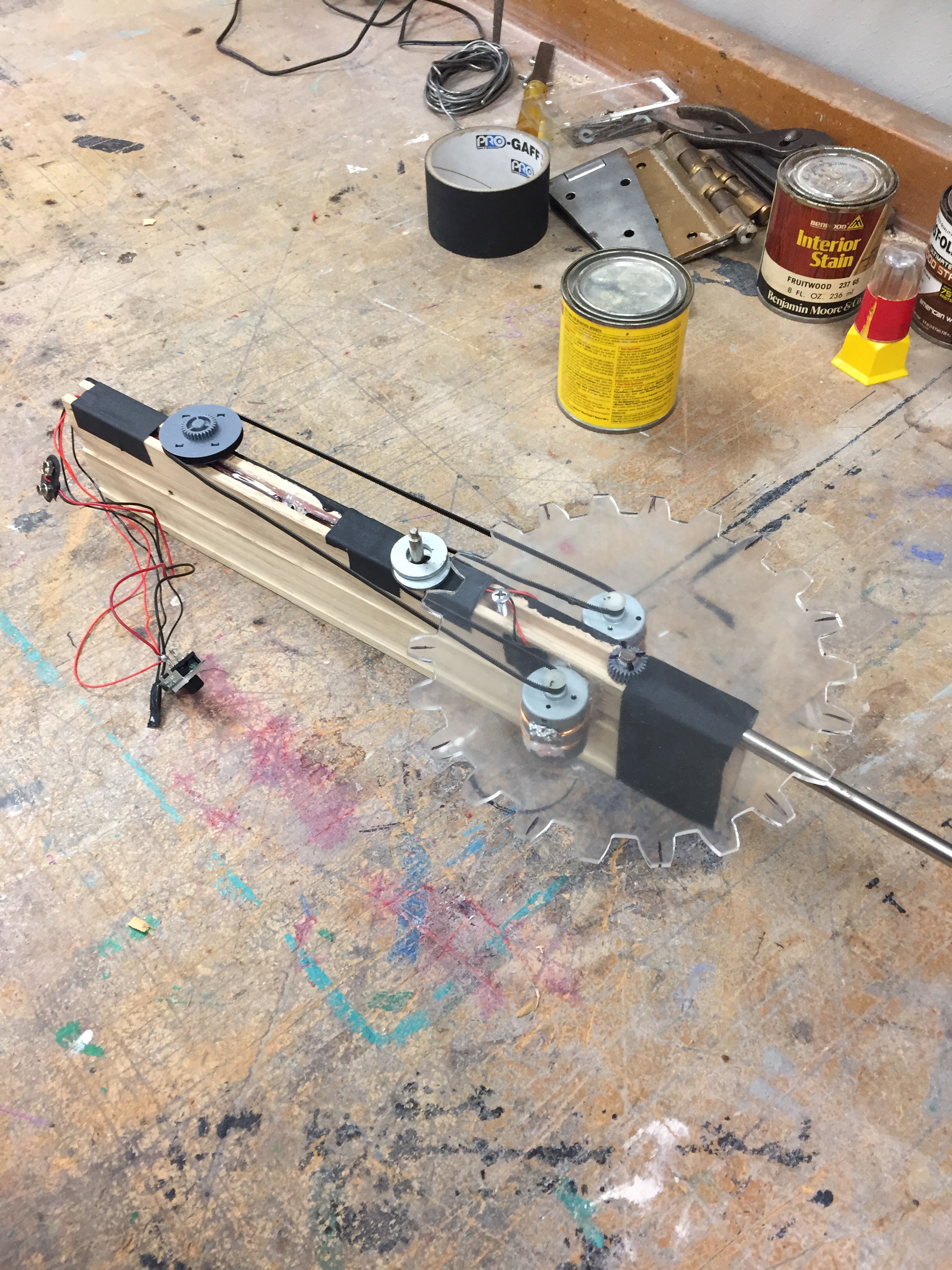
This project has taken a longer time then anticipated with all the modifications. Hopefully, this modification is the last. The rubber band launcher now has two motors that will turn one spool of string. The string then pulls the plastic wheel, which releases the rubber bands in rapid progression. This occurs because as the string is pulled off the wheel, the rubber band strung over it is released. The mounting of the motors, and battery pack, along with the gear belt, were made and installed by myself, the idea came from Ben.
